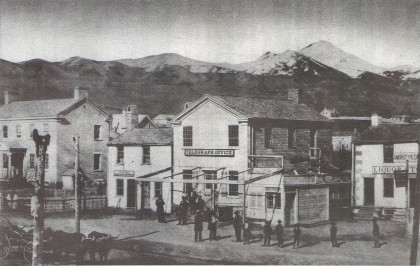American Telegraph Office, About 1861
Reprinted from "Crown Jewels of the Wire", June 1991, page 17
TELEGRAPH displaced the Pony Express which had created such a sensation in
Western America. The Pony Express had been founded to cover the 2,000
miles between St. Joseph, Missouri and Sacramento, California. An attempt had
been made to cover this distance in ten days. Five hundred spirited but sturdy
horses and two hundred men were required to handle the job. Eighty
carefully chosen, thin, wiry, daring men were selected as riders. Rapid change
of horses -- a matter of seconds -- was made at stations each twenty miles. The
cost of sending message by Pony Express was prohibitive. Nothing but the most
important mail could be sent. To send a letter from California to
Missouri cost about $25.00.
In 1856 when a Mr. Creighton connected Omaha with an eastern line which had
been operating for over ten years, he conceived the idea of a coast-to-coast
line. An interview with Brigham Young brought a promise of help from Utah.
Brigham Young contracted to set the poles and string the wire both directions
out of Salt Lake City.
When the line was completed the courtesy of sending the first message over
the wire was given to Brigham Young. His message to Mr. Wade of the Pacific Telegraph Company was: "Utah has not seceded but is firm for the
constitution and laws of our once happy country, and is warmly interested in
such useful enterprises as the one so far completed."
Organized locally, the Deseret Telegraph Company set up lines between
St. George, Utah and Preston, Idaho, connecting the principal cities for five
hundred miles. The problem of fast communication was solved for the pioneers.

Medium Image (130 Kb)
Large Image (333 Kb)
This fine photograph and text was supplied by Duane Davenport of Cedar Crest,
New Mexico. Duane speculates that those are wood-covered Wade insulators on the
poles in the left foreground. What do you think? (Source of photograph unknown)
| 